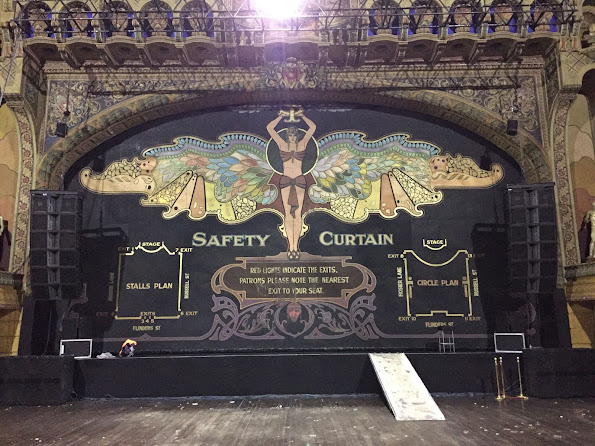A film about what now??
One of the least shocking aspects of this week's film is the fact that it owes its existence to Charles Boyer and a cockroach.
I should probably explain.
In 1941, Billy Wilder wrote the screenplay for a film called Hold Back the Dawn. The story takes place in a small Mexican town just over the US border, where refugees congregate and wait (often for years) for their entry visas to be approved.
Billy Wilder had done his own stretch in just such a town, and the screenplay was written with a great deal of personal experience.
But the specific story he tells in the film follows the fortunes of a French/Romanian gigolo (ultimately played by Charles Boyer) who decides to shortcut his visa application by seducing and marrying a gullible American woman.
One early scene in Wilder's script featured Boyer's character hitting emotional rock-bottom in his sweltering Mexican hotel room and conducting an existential conversation with a cockroach.
Don't feel too badly if you know this film but can't recall the "cockroach" scene. It never got filmed.
Charles Boyer hated the scene, and refused to perform it. Mitchell Leisen (the director of Hold Back the Dawn) capitulated to Boyer, and the scene was junked.
Wilder was furious. He was furious at Charles Boyer; he was furious at Mitchell Leisen, and he swore then and there that he would never again trust anyone else to direct his screenplays.
And that, boys and girls etc, is how Billy Wilder became a director.
One year later, the world experienced Billy Wilder's directorial debut; a smart, charming romantic screwball comedy starring Ginger Rogers and Ray Milland that happened to be (as Billy Wilder himself described it in 1977) "the first American movie about pedophilia."
Let us pause for a moment while the Hays Office blows up.
The basic premise of The Major and the Minor is very simple. Ginger Rogers plays a young woman trying to get home to Iowa, only to discover that the train fares have gone up since the last time she travelled. Rather than cancel her trip, she pretends to be 12, and purchases a child-rate ticket.
While avoiding the suspicious conductors on the train, she bumps into Ray Milland, who thinks she really is 12.
Complications ensue.

Many things about this film are shocking, but the most astonishing thing of all is that it isn't offensive.
Billy Wilder's script dances around some very edgy subjects (he wasn't kidding when he called it the first American movie about pedophelia) but somehow, against all odds, it never crosses the line.
That's not to say that the film is innocent. Far from it.
Like last week's Stage Door, The Major and the Minor doesn't shy away from some harsh realities of modern life; specifically the kinds of things faced by young women on a regular basis. And Billy Wilder wrote the screenplay just as the US was entering World War II. Over in Europe, Wilder's entire family was being murdered in Auschwitz, so playing nice with the Hays Office wasn't exactly high on his list of priorities.
Don't think for one moment that The Major and The Minor is dark or gritty or even especially controversial. It isn't. On the contrary, it's very, very funny and exquisitely executed; particularly by Ginger Rogers, who gives the performance of her career.
Rogers was 31 in 1942, and the whole film would have collapsed if we couldn't accept her performance as a 12-year-old girl. To that end, she worked initially with Edith Head (the legendary Hollywood costume designer) to create a "transformation" that her character might plausibly pull off in a train station bathroom.
But the ultimate credit has to go to Rogers herself, who captures not just the look, but the body language of a gangly teenager.
By this point in her career, Ginger Rogers was one of the top stars in Hollywood. Her partnership with Fred Astaire had made her a household name, but she had also established herself as an incredibly talented and versatile actress with films like Stage Door and Bachelor Mother, as well as Kitty Foyle in 1940, which had won her an Oscar.
This film is also notable for a cameo appearance by Rogers' real-life mother, Lela Rogers.
The Major and the Minor was extremely well received when it was first released, and even contemporary critics were astonished that it was able to get away with as much as it does. Credit for that has to go to Billy Wilder, who never for one moment takes his hand off the wheel. This is ultimately his film, and one can readily understand why he had decided never again to trust anyone else with his screenplays.
The era of the "Billy Wilder" movie had begun.
We will screen The Major and the Minor at 7.30 on Thursday, the 9th of May, at the Victoria Park Baptist Church.


















Comments
Post a Comment